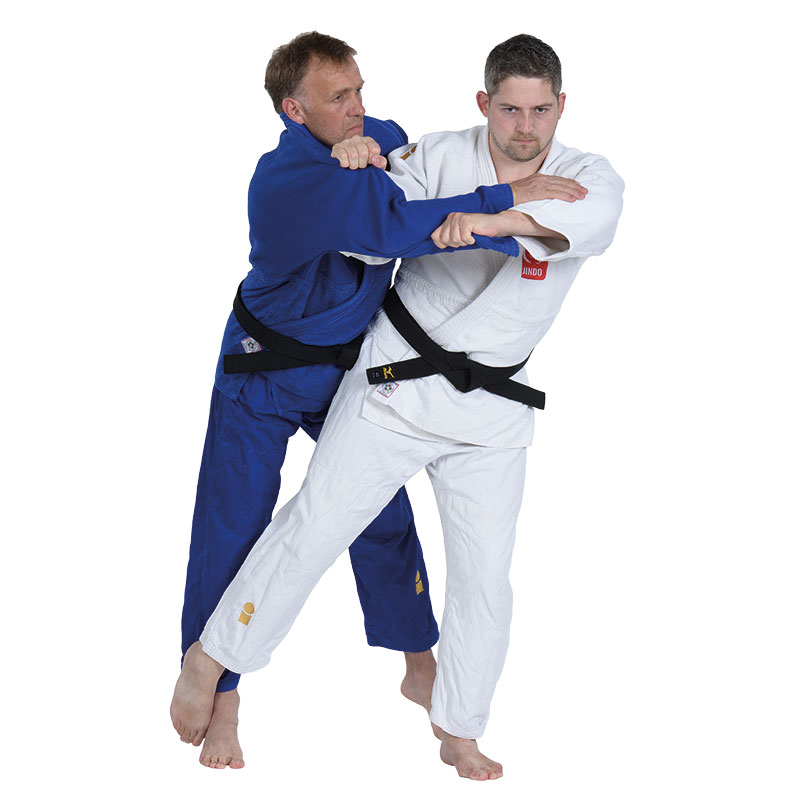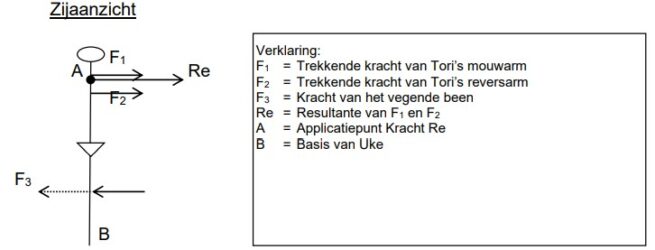Yama-arashi 山嵐
Mountain Storm
Classification: Te-waza (Hand Technique)
Japanese meaning: Yama = mountain, Arashi = storm
Type: Arm throw (with a sweeping leg action)
Technical Description
Yama-arashi is a powerful hand technique that combines pulling and sweeping actions to unbalance and throw an opponent diagonally forward. Tori grips uke’s right lapel and right sleeve, breaks uke’s balance toward the right front corner (migi-mae-sumi), and uses the back of their own right leg to sweep uke’s legs upward in a lifting motion.
This technique requires perfect timing and coordination of upper body control with a dynamic leg sweep, making it both rare and spectacular when performed effectively.

How to Perform
-
Kuzushi (Balance Breaking): Tori pulls uke forward and diagonally toward the right front corner using the grip on uke’s lapel and sleeve.
-
Tsukuri (Entry): Tori shifts their weight and positions themselves for optimal leverage.
-
Kake (Execution): As uke’s balance breaks forward, tori sweeps the back of uke’s legs (just under the knees) upward with the back of their own right leg, while simultaneously lifting with the arms to project uke through the air.
Biomechanical Analysis of Yama-arashi
Principle: Couple
-
Re (Resultant Force): Generated by the pulling motion of tori’s arms.
-
F3 (Leg Force): The sweeping action of the back of tori’s leg under uke’s knees.
-
Support Removal: Uke’s support is taken away, and their center of mass is projected upward and diagonally.
Yama-arashi is a powerful application of the couple principle, creating rotational motion through opposing forces acting at a distance: the lift of the arms and the sweep of the leg.

Historical Significance
The legend of Yama-arashi begins with Shiro Saigo (1867–1922) — a compact judoka, standing just 1.53 meters tall and weighing 53 kilograms. Despite his small stature, Saigo became an icon of early Kodokan judo thanks to this very technique.
In 1886, the Metropolitan Police of Tokyo hosted a judo tournament to test the effectiveness of the newly emerging Kodokan judo. In the final match, Shiro Saigo faced Entaro Kochi, a towering judoka standing 1.71 meters tall and weighing 83 kilograms.
Using Yama-arashi, Saigo managed to throw the much larger Kochi, stunning the audience and securing a legendary victory for Kodokan judo. This moment cemented Yama-arashi’s reputation and became a defining point in judo’s early development.
However, Saigo’s life took a turn. Just three years later, he was arrested following a street brawl, withdrew from public life, and left Tokyo. In memory of his skill and legacy, Jigoro Kano officially preserved Yama-arashi in the “Lost Techniques of the 1895 Gokyo.”
Did You Know?
Yama-arashi is considered a preserved technique (Habataki-waza) and is rarely seen in modern judo due to its complexity and rule limitations. But for historians and kata enthusiasts, it’s a beautiful bridge between classical and modern judo. Toshiro Daigo described the technique in his renowned book Wurftechniken des Kodokan, under Te-waza (pp. 172 and onward).